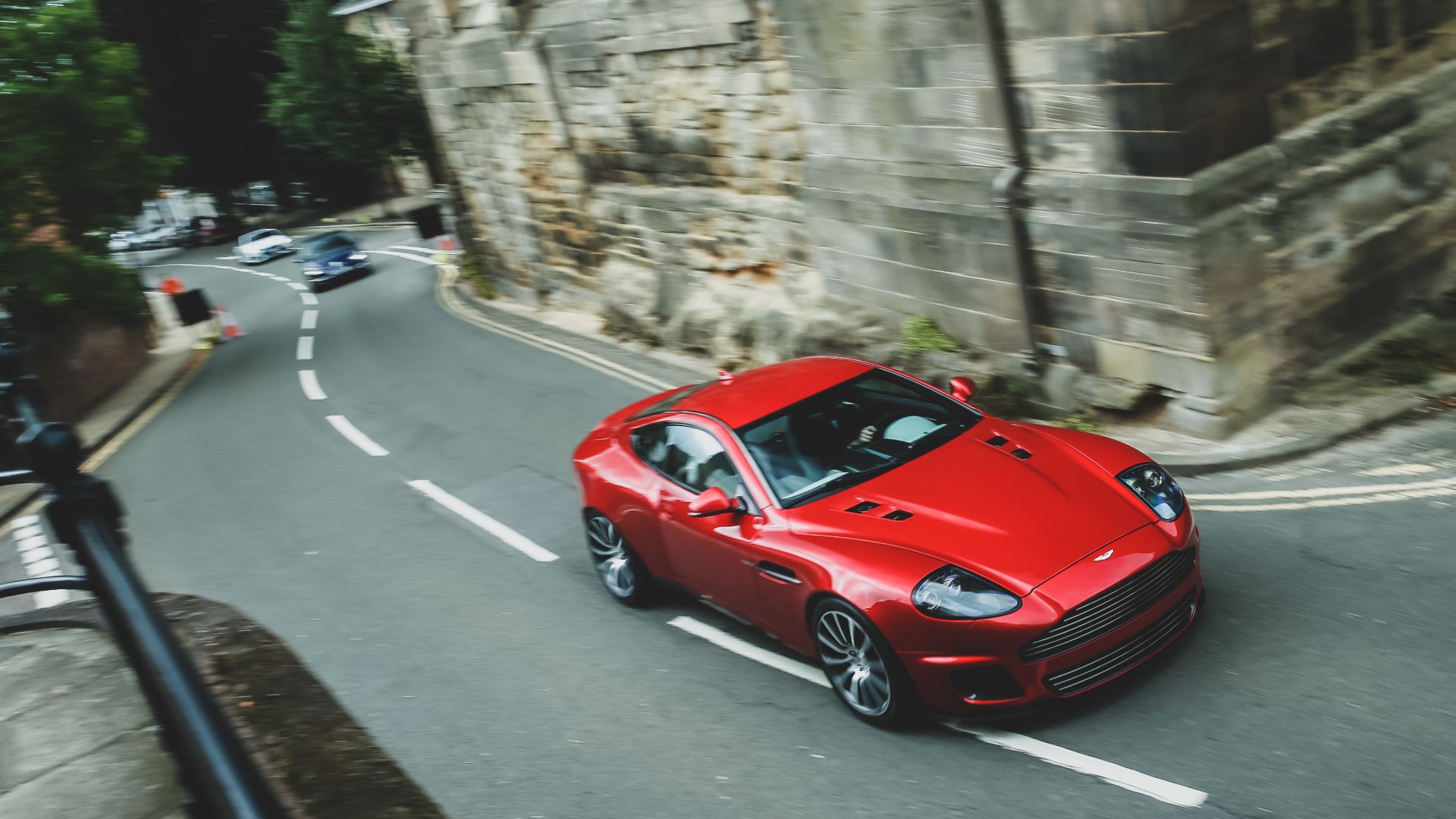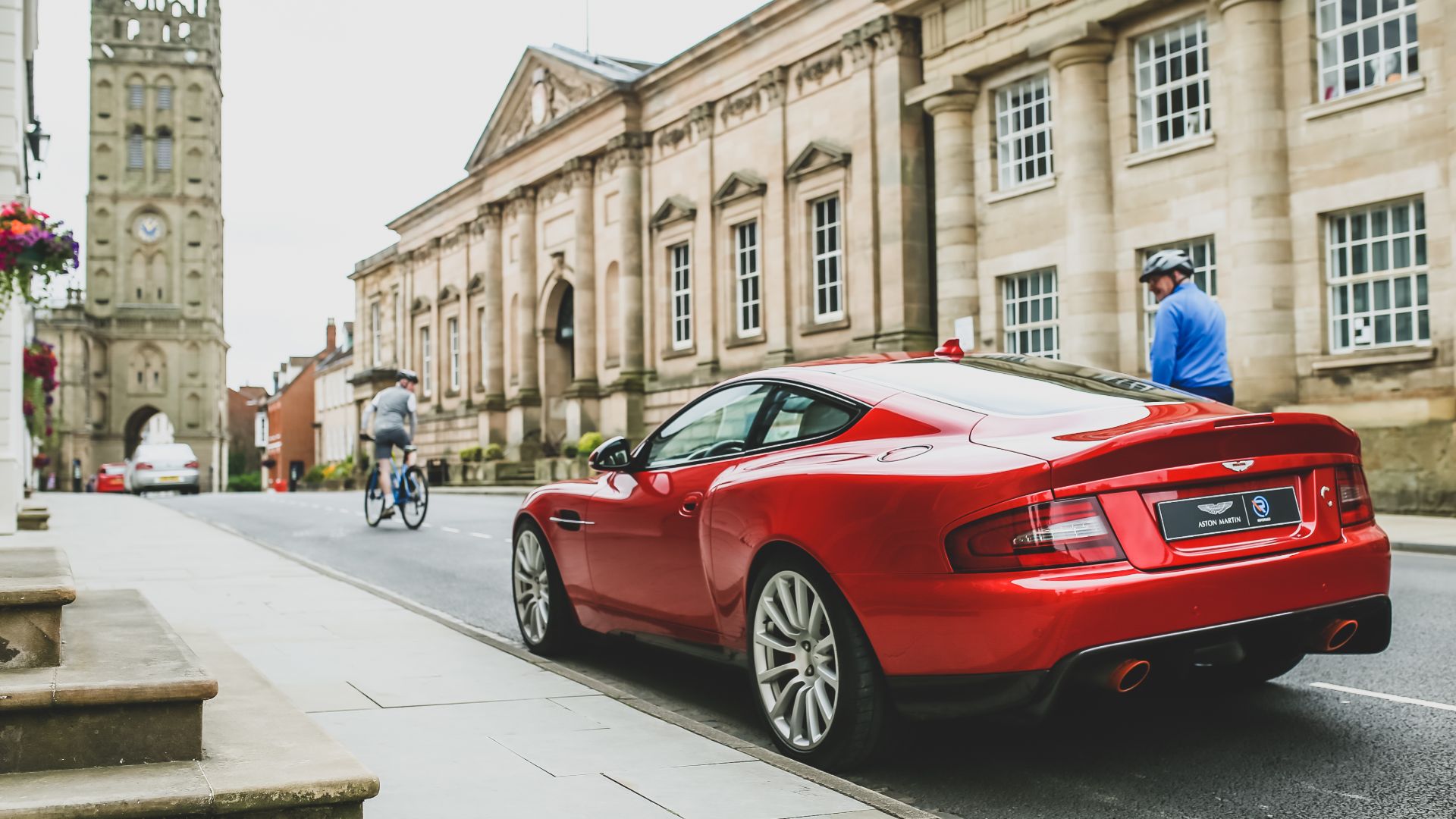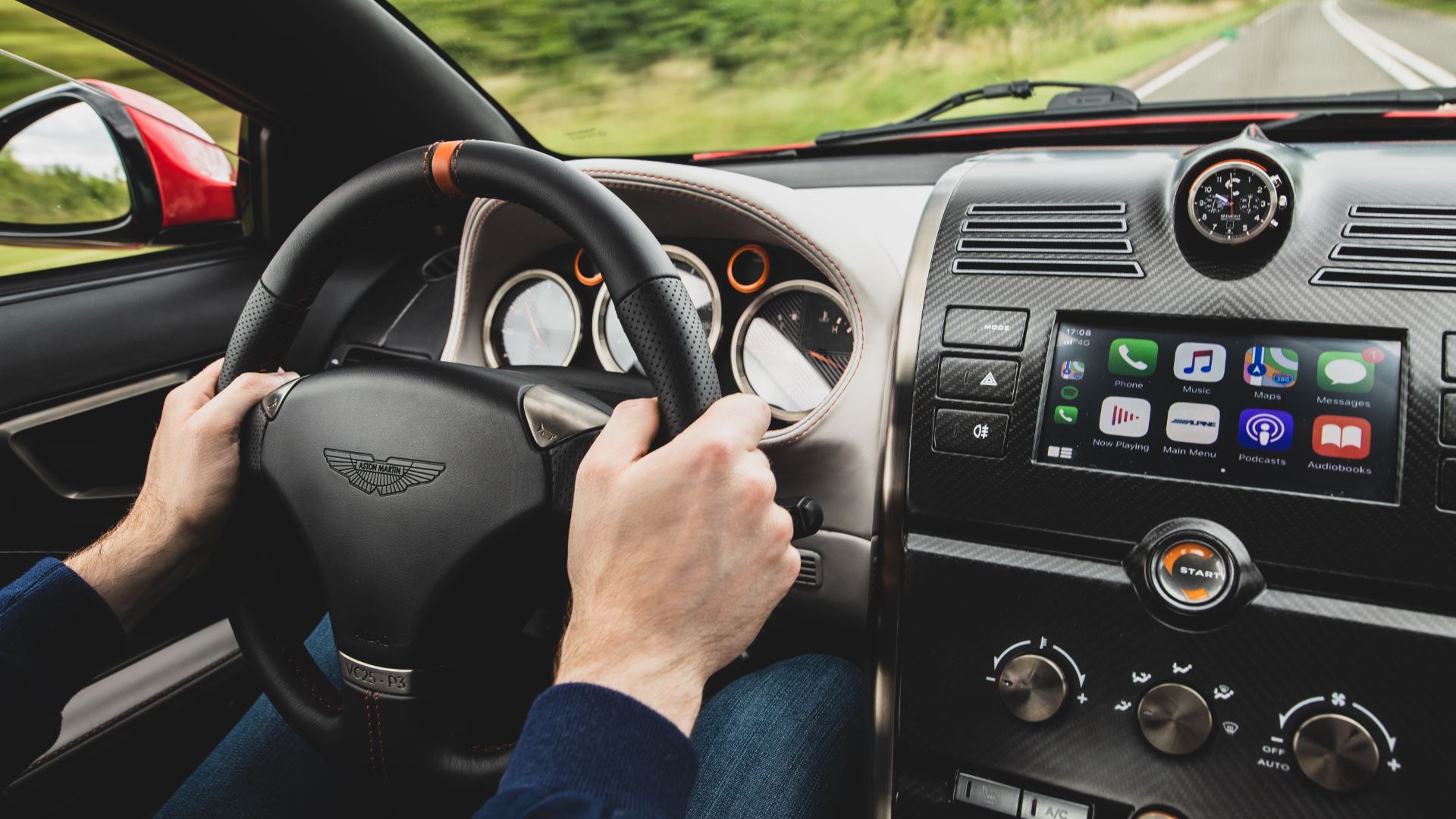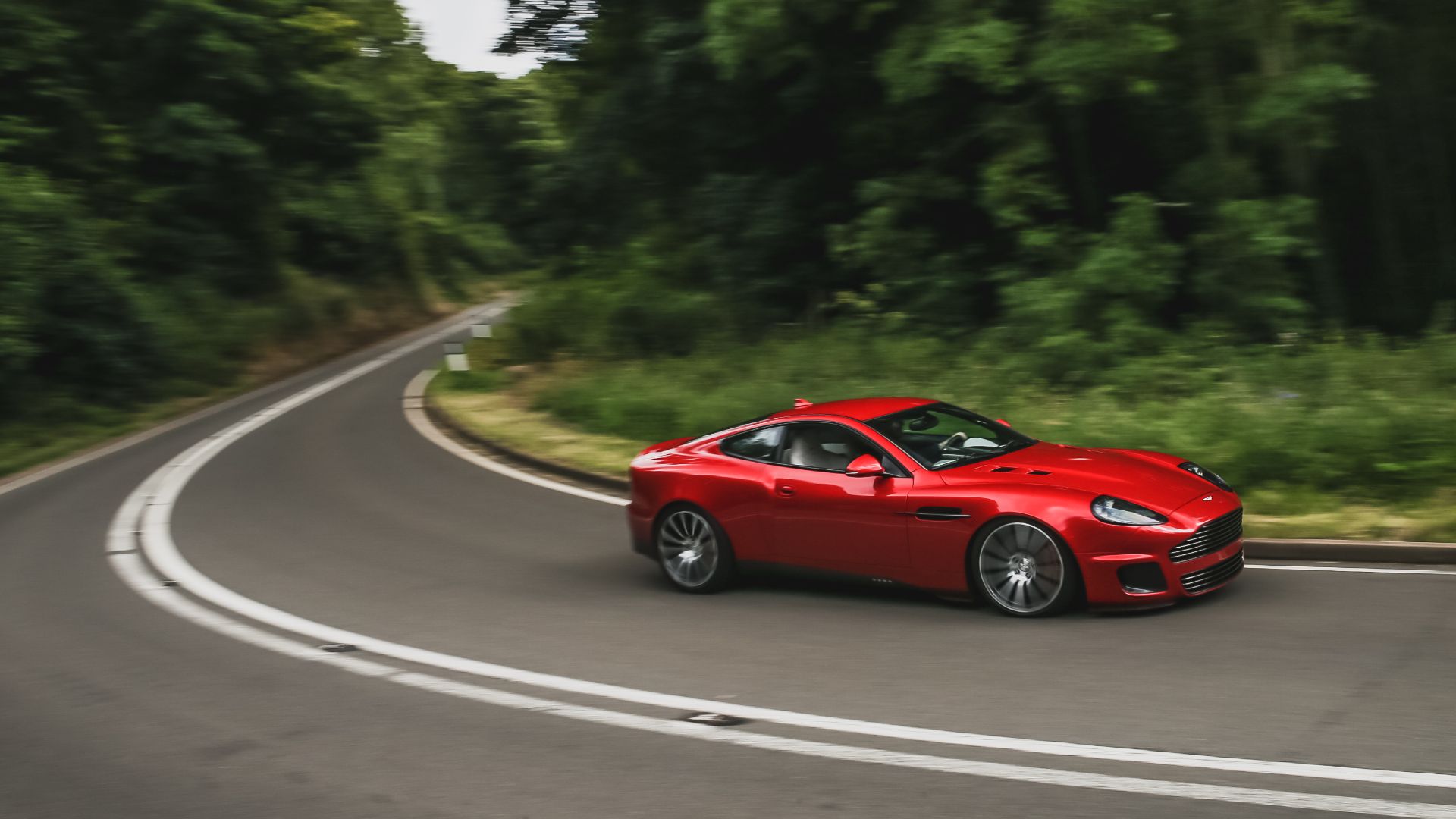
The government has decided: new petrol and diesel cars are vehicula non grata from 2030 onwards. That doesn’t mean supercars will cease to exist, of course – nor will the extreme EVs of tomorrow be any slower. But I worry they will feel more sanitised and less, well, super.
It leaves fully-paid-up petrolheads like me with two options. Either drive a classic and accept its faults and/or characterful quirks (delete as appropriate) or rebuild an older car with modern components and up-to-date tech. R-Reforged has chosen the latter route for its comprehensive, Ctrl-Alt-Del reboot of the Aston Martin Vanquish. And with a naturally aspirated V12 under its long bonnet, the Callum Vanquish 25 already looks more alluring than any 2,000hp electric hypercar.
If you haven’t heard of Ian Callum, you’ll know his work. Back in 1994, the affable Scot designed the Aston Martin DB7, defining the marque’s aesthetic for decades to come. Then, in 2007, he repeated the same feat at Jaguar with the XF, which banished olde-worlde curves for a tauter, more contemporary look.
Other cars on Callum’s CV include the Ford Escort RS Cosworth and Jaguar F-Type, but the original Vanquish is perhaps his masterpiece.
Premium Bond

Callum says the Vanquish is one of his “favourite creations”, but hasn’t stopped him trying to improve it. After retiring as Jaguar’s director of design last summer, he established his own consultancy and set to work.
Three hundred and fifty modifications later, the result is a British alternative to a Singer Porsche 911. Just 25 examples are being made, at a cost of £350,000 plus a donor car. Nostalgia doesn’t come cheap.
I arrive at the Warwick base of R-Reforged, the company that developed and builds the Vanquish. Head of engineering Adam Donfrancesco proffers a Covid-friendly elbow-bump, then shows me into the clinically clean workshop. Here is where many Aston Martin Works ‘continuation’ cars, including the reborn DB4 GT Zagato and ‘Goldfinger’ DB5, are made road-legal and MOT-ready – including the ability to pass new-car emissions tests. Updating a 2001 Vanquish seems almost straightforward by comparison.
British beef

The first thing you notice is the Vanquish’s stance. Riding 10mm lower, with 20-inch alloys (the originals were 19s) and a 60mm wider track, it looks powerfully potent, like Anthony Joshua in a tight T-shirt. Thankfully, Ian Callum has left the overall shape alone, but there are many detail differences. Spot the LED headlamps and tail lights, carbon fibre brake cooling ducts (replacing the front foglights), billet machined grille, larger bonnet vents, smoother window surrounds and jutting Inconel exhausts, their silencer sculpted into the rear diffuser.
The hardware has been upgraded, too. Reworked cylinder heads, racier camshafts, new manifolds and a recalibrated ECU strengthen the 6.0-litre V12 to 580hp, around 60hp more than a post-2004 Vanquish S. R-Reforged doesn’t quote performance figures, but reckon on 0-62mph in around 4.5 seconds and 200mph flat-out. Pretty brisk.
Adam decamped to Michelin’s test-track in France to hone the car’s chassis. “We found a sweet-spot between comfort and handling,” he tells me. “There’s more precision in the steering, better roll stability at the rear and far more grip.” New parts include Bilstein dampers, stiffer anti-roll bars and Michelin Pilot Sport 4S tyres. Carbon-ceramic brakes from the Aston Martin One-77 are optional, and fitted to prototype #03 – the car I’m driving today.
Manual handling

This particular Vanquish also has a six-speed manual gearbox: something never offered on the original. Alternatively, you can retain the factory-fit ‘ASM’ automated manual (don’t bother) or choose a conventional torque converter auto, borrowed from the Corvette. About 50 percent of buyers have chosen the manual thus far, says Adam.
Inside, there’s plush leather, a carbon fibre centre console and plenty of Callum’s signature ‘abstract tartan’ trim. The rear seats are replaced by a custom Mulberry luggage set, while a detachable Bremont pocket watch sits atop the dashboard. However, even the most skillful makeover can’t disguise the Aston’s advanced years. Car nerds will spy some lingering leftovers from the Ford parts bin, such as the electric window switches, too.
All that fades into the background when you press the Callum ‘C’ start button and the V12 erupts into life. It sounds hard-edged and vital, the busy bluster from its tailpipes ricocheting off the workshop walls. I pick my way through Warwick’s suburbs, cross the M40 and head for the Cotswolds. On dual carriageways, the Aston cruises like a consummate GT, riding a wave of omnipotent torque, yet its supercar side is never more than an ankle-flex away. See a gap in traffic and response is electric, the engine piling on revs as if you’ve mistakenly dipped the clutch.
Soul food

The extra grunt versus a standard Vanquish is obvious; even by 2020 standards, the ‘25’ feels fiercely quick. And the manual gearbox helps make the most of that elastic, bombastic engine. Its knuckly shift is physical and resolutely mechanical, with pedals well spaced for heel-and-toe downshifts. It would certainly be my choice.
Not that you’ll need any excuse to blip the throttle. The V12 sounds spectacular, its malevolent snarl building to a decadent wail. Where the original Vanquish played heavy metal, this one adds a layer of classic soul. Every underpass brings a serenade, every tunnel a symphony. In an era when engines are muted by forced induction and filters, it’s like trading a compressed MP3 for a remastered CD.
R-Reforged has tuned the Callum Vanquish’s 5.9-litre V12 to deliver 580hp (up 60hp on standard). It pulls effortlessly and sounds absolutely epic.
Oh, and the underside of the bonnet is trimmed in tartan. pic.twitter.com/TssbOfHzMq
— Tim Pitt (@timpitt100) October 13, 2020
While its powertrain feels old-school, the Vanquish has impressively modern manners. Its ride is supple enough for British B-roads, yet controlled enough to inspire confidence.
The steering bristles with detail and the chassis seems to roll up its sleeves and work with you, only shifting from neutrality to oversteer if provoked.
Past master

A lower seating position and smaller steering wheel (reshaped on R-Reforged’s milling machine) also enhance the sense of connection. “It’s like you’re wearing the car, rather than riding on top of it,” says Adam.
Back at base, listening to the tick of cooling exhausts, I’m feeling a bit more positive about life after 2030. Maybe, when the world forges into an electric future, car enthusiasts can get their kicks in the reimagined past.
I’m not sure what Callum is working on next, but if you’re reading this, Ian, a modernised Escort Cosworth would be just brilliant.
ALSO READ:
New Jaguar E-Type Unleashed 2021 review